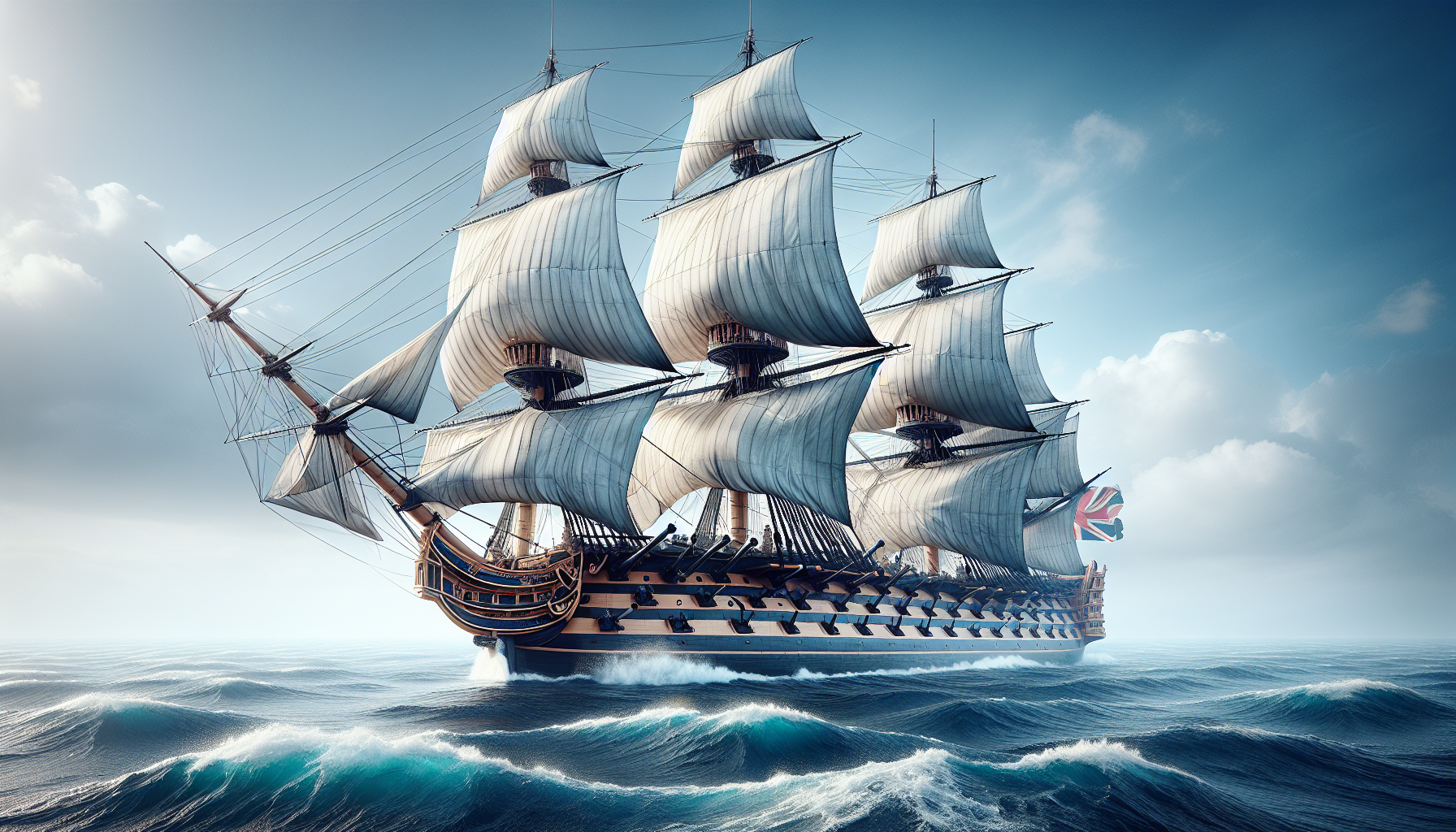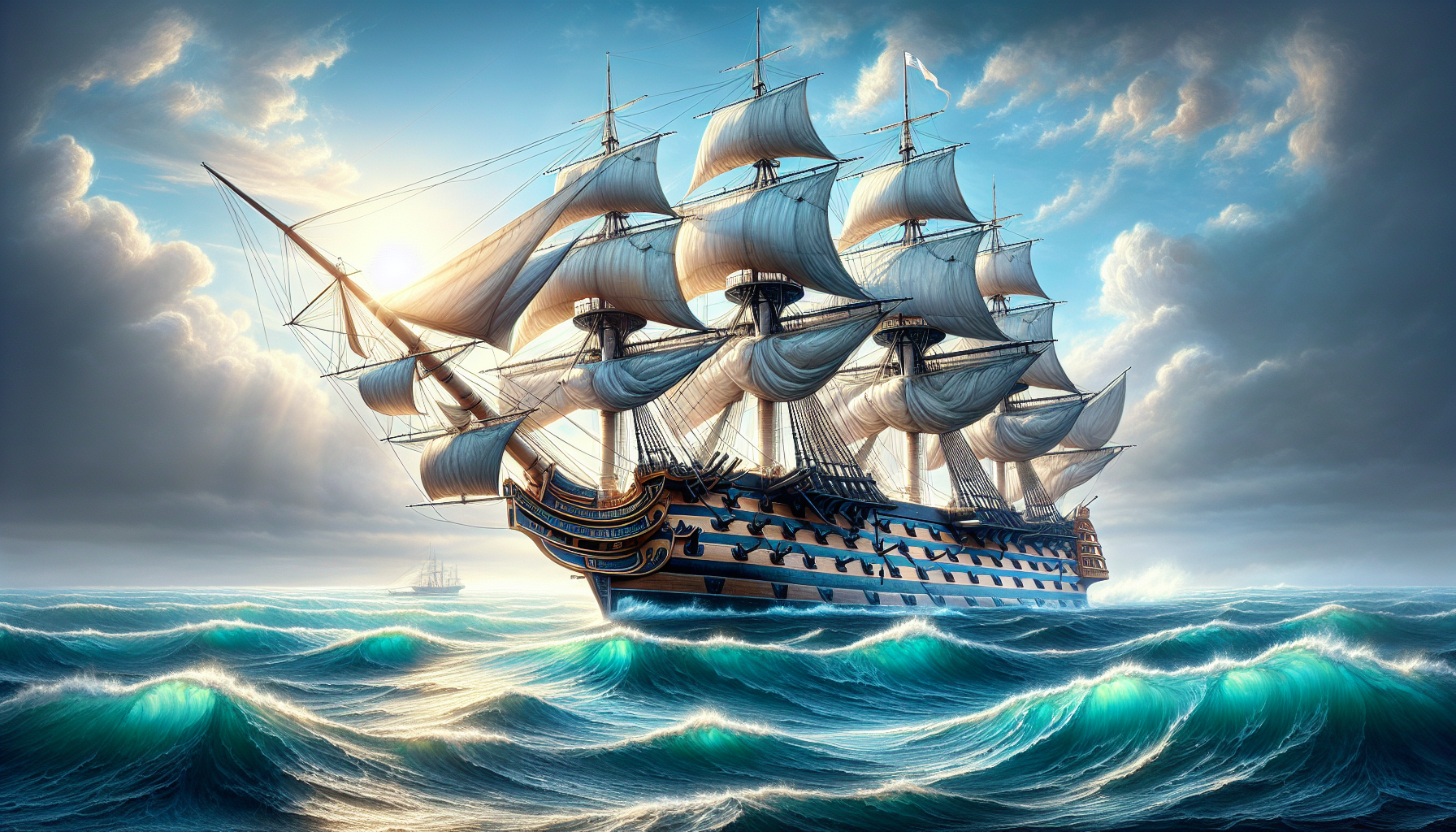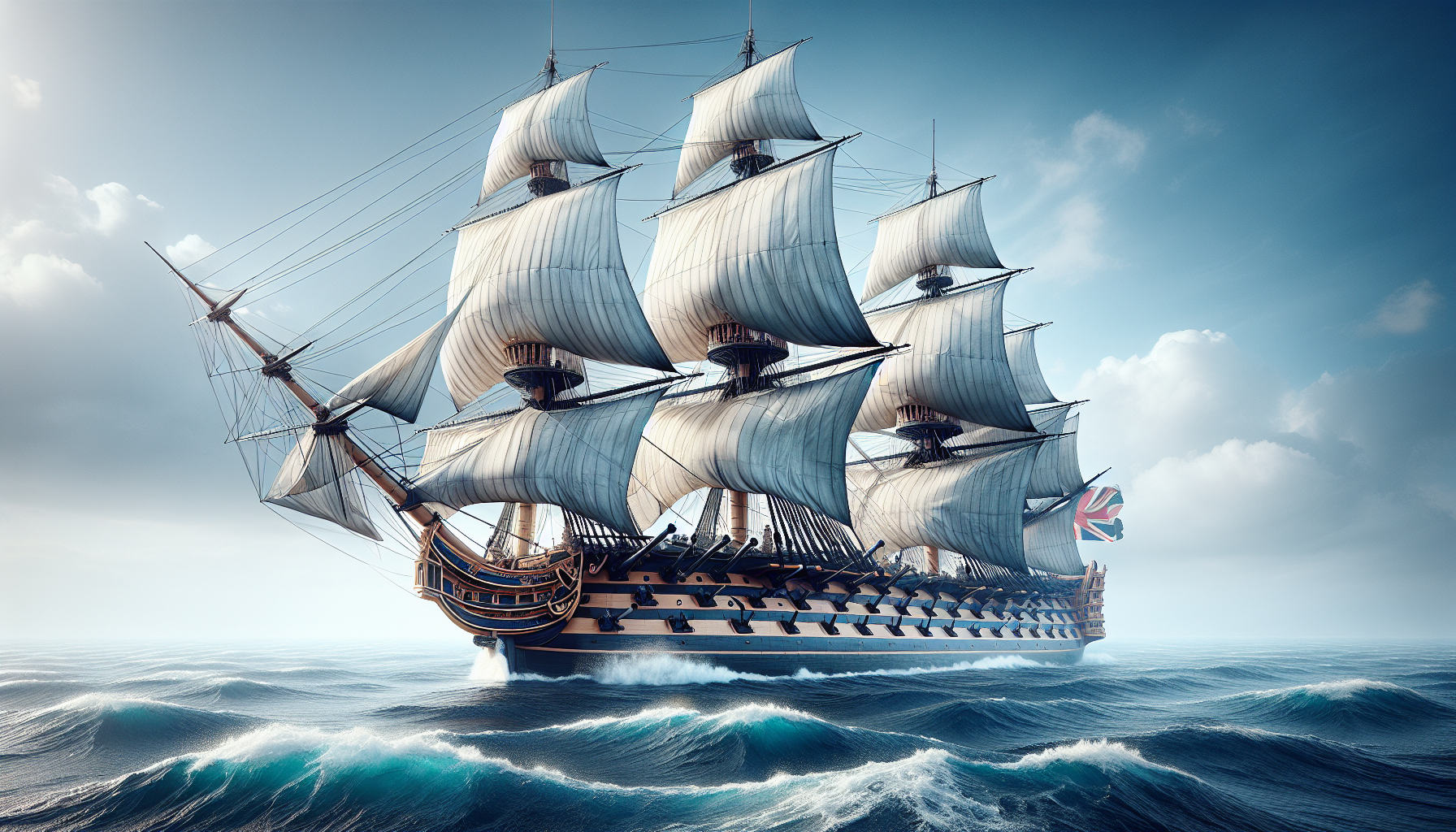The HMS Victory serves as a remarkable case study in maritime history, illustrating the transformation of a vessel from potential obsolescence to an enduring symbol of naval power. Initially facing a dismal fate as a scrap candidate, it narrowly escaped conversion into a prison hulk through timely intervention and significant investment. The extensive three-year refurbishment, which exceeded the costs of its original construction, marked the beginning of a new chapter for the ship, aligning it with critical historical narratives.
This article examines the pivotal role of HMS Victory during the Napoleonic Wars, particularly as the flagship of Vice Admiral Nelson. The ship’s involvement in the Battle of Trafalgar not only solidified its legendary status but also highlighted the strategic importance of leadership and innovation in naval warfare. By analyzing the interplay between the vessel’s vulnerabilities and its triumphs, a broader understanding of maritime resilience and supremacy in the age of sail is developed.
The Early Years of HMS Victory
Construction and Launch
Constructed in the 1750s at Chatham Dockyard, HMS Victory stands as a testament to the burgeoning naval architecture of the age. You may consider the ship’s design, emphasizing a robust oak frame that would enable her to endure the trials of maritime conflict. Launched in 1765, Victory was initially conceived as a first-rate warship, intended to showcase Britain’s naval prowess while simultaneously enhancing the Royal Navy’s operational capabilities. However, despite her formidable structure and ambitious specifications, the ship was born into an era rife with challenges that would test her fortitude long before she faced enemy fire.
Initial Service and Challenges
Upon entering service, HMS Victory quickly became a central figure in the Royal Navy’s fleet, engaged in various naval operations during the Seven Years’ War. Yet, her initial years were marked by difficulties. You will note that maintenance issues plagued her operational capacity, exacerbated by the general condition of naval vessels at the time. It wasn’t uncommon for ships of her type to suffer wear and tear from prolonged bouts at sea, something that became evident as Victory’s crews oscillated between triumphs and setbacks. She was not merely a maritime vessel; rather, she represented the resilience and determination embedded within the British naval ethos.
Short Life Expectancy Predictions
As the 1790s approached and the specter of the Napoleonic Wars loomed, analysts began predicting a grim future for HMS Victory. The ship’s perceived obsolescence became a point of concern among navy officials. You might conclude that these assessments, fuelled by the rapid advancement of naval technology—such as steam power and more efficient cannon designs—cast a shadow over her legacy. These predictions, however, did not account for the profound transformations that were about to unfold, illuminating a narrative of survival against the odds.
The Fate of Near Scrap
The Threat of Decommissioning
As you examine the history of HMS Victory during the late 18th century, you will find that the likelihood of her decommissioning grew increasingly plausible. Faced with declining navigational efficiencies and with a cadre of newer, more innovative ships emerging from shipyards, the Royal Navy considered relegating Victory to a prison hulk—a grim fate whereby she would serve as a floating penal institution. The very thought shrouded her legacy in doubt, casting her into a liminal space between obsolescence and an uncertain future.
Transition to a Prison Hulk
The agony of being turned into a prison hulk would have shadowed the ship’s identity. As you perceive this transition, you can visualize the hollow echoes of life aboard a vessel that was once a proud symbol of naval dominance. The fate of such a transformation would entail a loss of purpose and prestige, reducing HMS Victory to a shell of her former self. However, there was a glimmer of hope on the horizon, as resourceful naval officers and loyal supporters recognized her potential, advocating for a refitting that could restore her dignity.
Last-Minute Rescue from Scrap
At the precipice of her demise, HMS Victory experienced a last-minute reprieve that would alter her trajectory forever. You should appreciate the complex factors—political tides and shifts in naval strategy—that conspired to save her from the scrap yard. This moment of intervention not only allowed her to avoid the indignity of her impending fate but also set the stage for a comprehensive refitting that would enhance her capabilities and reaffirm her significance within the Royal Navy.

The Refitting Process
Scope of the Refitting Works
During the subsequent refitting process, you will note the extensive works undertaken to salvage HMS Victory. The project lasted three arduous years, reshaping her structure, systems, and armament. Expert craftsmen and naval architects collaborated to modernize critical components, ensuring that she could navigate the turbulent waters of warfare effectively. The scope of this transformative endeavor signifies a pivotal point in her journey, marking the transition from dilapidation to revitalization.
Costs and Financial Implications
You may observe that the financial implications of this extensive refit were considerable, surpassing the initial costs incurred during her construction. The Royal Navy understood the immense investment necessary to breathe new life into Victory. In doing so, they acknowledged not just the ship itself but the vital role she would play in future naval engagements. The substantial expenditure reflects the pressing need for strategic assets that could excel in an age characterized by evolving combat dynamics.
Upgrades and Improvements Made
With investments poured into the refitting, HMS Victory emerged fortified with an array of upgrades that would enhance her operational capability. New masts and sails allowed for superior maneuverability, while advancements in armament positioned her as one of the most powerful vessels of her era. You can easily envision her newly configured decks adorned with rows of cannons—each one a harbinger of a formidable presence on the battlefield. The upgrades bestowed upon her not only restored her functionality but elevated her status, rekindling the legacy that had nearly been buried.
Return to Service
Recommissioning in 1803
In 1803, HMS Victory returned to service, reborn from the ashes of predicted obsolescence. As you study her recommissioning, consider the significance it represented—for both the ship and the Royal Navy. She was not merely an artifact of the past; rather, she had become a renewed symbol of power and potential within the maritime world. This moment heralded her re-entry into a complex tapestry of naval maneuvering and conflict that would soon come to define her legacy.
Role as Vice Admiral Nelson’s Flagship
Now, as you delve deeper into the annals of history, it is essential to recognize her role as Vice Admiral Horatio Nelson’s flagship. In this capacity, HMS Victory became a crucible for pivotal strategic decisions, brimming with the weight of destiny. Under Nelson’s command, the ship was not just part of the fleet; she was elevated to the forefront of naval strategy, personifying British naval strength during a time of unprecedented conflict.
Strategic Importance in Naval Warfare
The period leading to the Napoleonic Wars saw HMS Victory assuming a central position in naval warfare. You can appreciate her strategic importance, as she became a symbol of British maritime supremacy. Her presence at this juncture represented not only military might but also a broader embodiment of national pride. The Royal Navy’s preparations for conflict were intricately intertwined with Victory’s legacy, underscoring the ship’s role in safeguarding British interests.

The Battle of Trafalgar
Preparations for Engagement
The lead-up to the Battle of Trafalgar in 1805 was marked by intense preparations aboard HMS Victory. You should envision the chaos and fervor as officers and crewmen meticulously readied the ship for engagement. The tension in the air was palpable, with meticulously arranged logs, meticulously stocked provisions, and the constant whirr of activity symbolizing the urgency of the moment. Victory would soon find herself at the epicenter of naval history.
Leadership Role of Admiral Nelson
As you analyze the battle’s dynamics, the pivotal role of Admiral Nelson comes to the fore. His leadership, characterized by audacity and tactical brilliance, would be forever intertwined with the fate of HMS Victory. Nelson’s ability to galvanize his sailors and inspire extraordinary valor against overwhelming odds exemplified the indomitable spirit of the British Navy. It is within this framework that Victory would write her legend, propelled by the sheer will of her crew and the vision of her commander.
Significance of the Victory at Trafalgar
The victory at Trafalgar marked a watershed moment in maritime history. You may recognize its significance as not merely a triumph of tactics but as a turning point in the Napoleonic Wars. The strategic implications of this engagement solidified British naval dominance and set the tone for subsequent encounters at sea. HMS Victory, as the flagship that bore witness to this monumental event, secured her status as a symbol of resilience and strength in the face of adversity.
Construction and Design Innovations
Advancements in Shipbuilding Technology
Throughout her storied history, HMS Victory exemplified the advancements in shipbuilding technologies of her time. You may take note of the innovations in her construction, including the application of scientific principles to optimize hull designs for speed and maneuverability. Naval architects employed geometry and new materials to enhance not only speed but also durability, ensuring that ships could withstand the ferocity of battle and the relentless forces of nature.
Armament and Naval Engineering
The triumphs of armament development are evident in HMS Victory’s design. Equipped with an imposing array of cannons, she embodied the quintessential ship of the line, maximizing firepower to wield strategic advantage in naval engagements. As you scrutinize her formidable battery, you will appreciate how naval engineering evolved during her time. The arrangement and caliber of her guns were a reflection of the growing significance of naval firepower in maritime warfare.
Crew Requirements and Management
Operating a vessel of HMS Victory’s stature necessitated an enormous crew. You may consider how the complexities of her systems warranted adept management and coordination. Life aboard Victory was both a privilege and a laborious undertaking, requiring exceptional teamwork to manage sails, navigate treacherous waters, and maintain an array of weaponry. The demands on her crew reflect the broader societal challenges of the time, illustrating the human element that propelled technological innovations to fruition.

HMS Victory in the Napoleonic Wars
Role in Major Naval Campaigns
As the Napoleonic Wars escalated, HMS Victory asserted herself in major naval campaigns that defined Britain’s military doctrine. You should recognize her involvement in strategic theaters that extended beyond mere combat engagements. The ship played a crucial role in maintaining trade routes and projecting British power across oceans, solidifying her presence as an indispensable asset in unprecedented maritime conflict.
Impact on British Naval Strategy
Her service during the Napoleonic Wars had profound implications for British naval strategy. Victory was an embodiment of how maritime doctrine evolved, adapting to the reality of conflict while capitalizing on innovations in naval warfare. Navigating emerging threats and paradigms, her legacy would influence future strategic decisions that would carry British interests to the farthest reaches of the globe.
Enduring Legacy of Innovation
The innovations inherent in HMS Victory’s design and operation reverberated well beyond her active service years. You can observe how her influence shaped shipbuilding practices and approaches to naval engagement for subsequent generations. The lessons learned aboard her decks redefined naval tactics, as emerging technologies and methodologies began to elucidate the path toward future naval conflicts.
Cultural and Historical Significance
Symbol of British Naval Power
HMS Victory is often regarded as a symbol of British naval power, an icon whose legacy extends into the realms of culture and national identity. You may find her image invoked in discussions of maritime prowess and naval heritage, epitomizing the indomitable spirit of the Royal Navy. This ship transcends her tangible existence, representing belief in the supremacy of the British fleet during a pivotal period in history.
Influence on Maritime Literature and Art
In various forms of maritime literature and art, HMS Victory looms large as a powerful motif. You might observe how poets, painters, and historians have sought to immortalize her story, weaving narratives that capture the essence of her victories and tribulations at sea. Through the lens of human creativity, Victory has been recreated as a powerful symbol of not only military might but of human endeavor and resilience.
HMS Victory in Popular Culture
The presence of HMS Victory in popular culture speaks to her enigmatic allure and timeless relevance. You may recognize her as more than a warship but as an indelible part of a broader storytelling canon. From films to novels, her legacy has embarked on a contemporary journey, ensuring that the ethos of resilience and strength crafted during her service continues to echo through generations, reaching a diverse audience eager to understand the tapestry of naval history.
Preservation and Restoration Efforts
Initiatives to Save HMS Victory
The preservation of HMS Victory stands as a testament to the enduring impact of her legacy. As you consider the initiatives undertaken to save her, you should appreciate the collaborative efforts between historians, naval experts, and dedicated volunteers. These initiatives aim to safeguard her physical structure while proactively engaging with her historical narrative, ensuring that her tale is preserved for future generations to explore.
Current Restoration Projects
As of today, ongoing restoration projects aim to maintain the integrity of HMS Victory while modernizing certain aspects for public engagement and educational purposes. You would do well to recognize the interplay between historical authenticity and contemporary access, as preservationists work to balance conservation with the practicalities of sharing her grandeur with visitors. This delicate process underscores civilization’s broader relationship with its maritime heritage.
Educational Programs and Public Engagement
Educational programs designed around HMS Victory further reinforce her significance in informing naval history. You may find that these initiatives broaden dialogue about maritime culture, instilling a respect for seafaring traditions and illuminating the ship’s role within the larger historical context of the British Empire. With public engagement aimed at fostering a love for maritime history, Victory continues her journey beyond mere steel and wood—she is a vessel for knowledge and cultural heritage.
Conclusion
The Transformation from Obsolescence to Legend
HMS Victory’s journey from near scrap to enduring legend embodies the complexities of naval history. You might ponder the interconnectedness of chance, foresight, and human commitment that allowed her to transcend the shadows of obsolescence. Through resilience and strategic investment, her tale serves as an exemplar of how transformation hinges upon a broader vision—a vision that secured her place in the annals of history.
HMS Victory’s Lasting Impact on Naval History
The historical footprint of HMS Victory is indelible. As you contemplate her enduring impact on naval history, recognize how her legacy transcended individual engagements, ultimately shaping the evolution of maritime warfare. She is more than a relic; she is a living chronicle of the tension between innovation and tradition that permeated the naval world.
Reflections on Resilience and Legacy
Ultimately, HMS Victory’s saga invokes reflections on resilience and legacy—a narrative rooted in the tumultuous seas of history that continues to stir the imagination. You might find her story as a vessel for inspiration, emphasizing the relevance of perseverance in the face of adversity. As she stands tall in her preservation, HMS Victory exemplifies the relentless pursuit of excellence and the power of maritime heritage, inviting us to ponder the legacies we must preserve for future generations.
